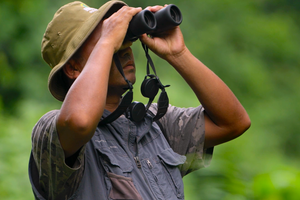Endangered baobab trees in Madagascar. People eat the fruit of the baobab, use its bark as medicine, and make ropes from its fibers. Royal Botanic Gardens, Kew
Humans make use of tens of thousands of different kinds of plants, many rare and endangered. Troublingly, most useful plant species grow outside protected areas, new research finds.
For the study, scientists mapped the distribution of more than 35,000 plant species used by people for, among other things, food, fuel, medicine, animal fodder, construction, or craft-making. The analysis accounted for both cultivated plants and plants grown in the wild.
While 16 percent of land worldwide is currently protected, plant species used by people are more likely to fall outside protected areas than within them, the study found. This is especially true of rare plants.
Researchers say that protected lands are particularly scarce in Central America, the Horn of Africa, and Southeast Asia, which boast the highest concentration of useful plants. The findings were published in the journal Science.
Countries have set a goal of protecting 30 percent of land and sea, but there is a vigorous debate as to which areas are most deserving of protection. Prior research has found that one in three plants used by people is at risk of extinction. The new study calls for safeguarding such plants when marking out new protected areas.
Further, the new research says, “it is essential to strike an appropriate balance between strictly protected areas that limit access to humans, and protected areas that accommodate the sustainable use of natural resources.”
ALSO ON YALE E360
The 30 Percent Goal: Is Bigger Always Better for Biodiversity?



